Ebru or the Art of Turkish Paper Marbling is a traditional Turkish book art of creating colorful patterns by sprinkling paints onto a tray of oily water with special brushes. These patterns are then transferred onto to a piece of paper or fabric giving rise to one of a kind design or patterns.
Ebru, a UNESCO-heritage listed art, was primarily used for book covers, calligraphy pieces, panels, and miniatures. Now it is used for many other decorative purposes, such as on wood, silk fabric and plastic.
Tiger Eye Ebru art by artist Sabiha Ozgur
Though the exact origin of this art is not known the earliest form of Ebru is known to have emerged in Central Asia making its way to Anatolia through the Silk Road then later perfected by the Ottoman artists.
Like other traditional art, such as calligraphy and tezhip (the art of illumination), it is traditionally transmitted from master to student through rigorous training.
Sabiha Ozgur is a master Ebru artist. She has been practicing this art since 2004. Sabiha was trained in Istanbul Turkey by great Ebru masters Hikmet Barutcugil and Ayla Makas. She worked with her master,Hikmet Barutcugil’s studio for 6 years before establishing her own studio in Istanbul, Turkey. She moved to the United States 7 years ago and has been practicing this art in the USA since then. Sabiha showcases and teaches at various local events and schools in the Washington D.C area. She studied psychology as her undergrad major and has a graduate degree in social psychology from Bogazici University, Istanbul, Turkey. She strongly believes in the healing power of art and studies art therapy as well.
I recently reached out to Sabiha for an interview to learn more about her experience as an Ebru artist and this is what she shared with us.
1- What inspired you to study Ebru art?
When I was a child, I was not very interested in the arts because I thought I wasn’t talented enough. I became interested in art when I was in 6th grade, especially when I met my art teacher who was very loving and modest.
Artist Sabiha Ozgur
Back then, it was mostly watercolor painting, but she showed me that if I had the intention and discipline, I can not only draw but also enjoy more advanced art. It is because of that one kind soul, I tried different medium like watercolor, oil painting, etc. but I still didn’t feel connected enough to pursue my interest in art.
During my college education, one of my friends told me that she was planning to traditional Turkish art Ebru class. When I heard that, I knew I was going to attend it since this was a medium, I hadn’t tried yet. It was 2003 when I first started doing Ebru thanks to that class, and I fell in love with it.
Working with water, the process being interactive, and being in the moment are the things that kept my interest in Ebru art.
Ebru art is the sibling of marbling, but I believe it takes marbling a step further from being decorative crafting to an art form with flowers and other figures.
2- How has the pandemic impacted your work?
With the COVID-19 pandemic, I’m learning to adapt to a “new normal” as art fairs, and workshops are indefinitely put on hold. I love sharing the joy and peace of Ebru with other people, so not being able to hold workshops is the main drawback of the pandemic for me in terms of my art. I could have held online workshops, but it is very difficult for people to follow what I show since they don’t have the materials for Ebru. All materials that I use are from Turkey, and it very difficult to bring supplies from Turkey at this time. So, I preferred not to do any virtual classes.
I am using this time to finally finish the Ebru projects I had in mind -- experimenting Ebru art on different objects and materials like bags, planters, wood, fabric, etc. So, thanks to the pandemic, I’m discovering new ways of doing Ebru art.
3- What is/are the most important thing(s) you learned from your teachers?
Sabiha Ozgur with her teacher Hikmet Barutcugil
You know Turkish masters loved Ebru, so they became some of the best in the game. Contributing beautiful floral patterns to the global catalog of marbling patterns in Ebru. Turkish masters have gotten so good at it that the UN placed Ebru on its world cultural heritage list. So, what I learned from my masters and especially from Hikmet Barutcugil are:
Love what you do,
Do it with passion,
Own it,
Cherish it,
Be humble,
Don’t judge anything and anybody,
Be positive,
Be patient.
But my masters’ teachings are beyond those points. They touched my soul and guided my psychological being as well. I need to explain a bit of the dynamic of marbling to be clearer. Ebru is a result of different factors working hand-in-hand in the perfect balance. Fluid dynamics are at work here: the water’s surface and density, and the interaction of surface, the paint, the surfactant ox gall, the quantity of gall in the paint, and the environmental temperature are all very important. It may take some time to establish the right delicate balance, but when everything is in harmony with each other, the process works smoothly. So, my masters always reminded us that we should be patient, we should do our best, but we should be mindful that it isn’t only us that is making of the art piece – there are many factors at play. The underlying philosophy here is that “everything is interconnected with each other.”
Ebru teaches us that we aren’t in total control but are part of a greater whole. We must try to do our best, and the rest is in control of the divine power and its rules. And, if something goes wrong, there is always a second chance!
4- What role does Ebru art play in promoting Turkish culture?
Sabiha Ozgur demonstrating Ebru art at the Turkish Embassy in Washington D.C.
The art of Ebru encourages dialogue through friendly conversation, reinforces social ties, and strengthens relations between individuals and communities. When this is the case, artists who want to learn Ebru art visit Turkey frequently. Turkish Ebru masters that live abroad use their art to promote the beauties of Turkish culture within that friendly and positive atmosphere of Ebru art.
Art is like having little kids: when they are around all the attention is on the kids. Ebru art is like that, when somebody demonstrates Ebru art, everybody pays attention to it, and all discussion is around the art. So, it stresses the positives of Turkish cultural heritage and brings different cultures together in peace. As I mentioned, the UN placed Ebru on its world cultural heritage list, so that is only in itself a success of Ebru art to promote Turkish culture.
5- Your advice for students who are interested in learning this art.
1. They should be patient and positive all the time. It will take time just to settle each step of the process. Ebru art is all about trial and error, especially when you are learning it for the first two years. It will be difficult in terms of finding the right balance and make the paints work. However, each piece in itself will be beautiful, something that you may not like today could be a unique piece in the future.
2. They shouldn’t see the full or empty part of the glass. They should be thankful that they have a glass and continue to work. As with most things in life, if you want to excel, you have to practice, practice, and practice!
3. They should be observant and thankful to the beauties of the greatest artist of all, Allah.
4. They should be modest about what they are doing and try to excel each and every day.
5. If they have the chance, they should work with a master to learn the traditional methods and designs, so that they can add on to those and let Ebru art develop and prosper.
For more information on Sabiha Ozgur’s work, please visit her website: https://www.sabihaozgur.com/ and her Instagram: https://www.instagram.com/sabihaozgur/
All images courtesy of the artist
Gallery of Sabiha’s artwork:

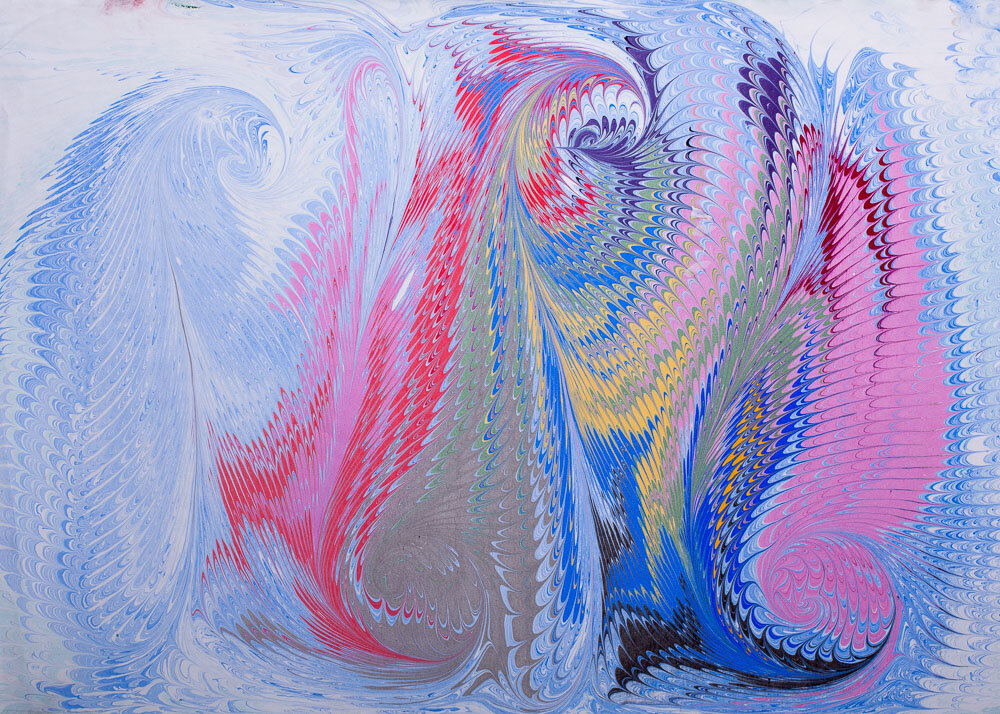
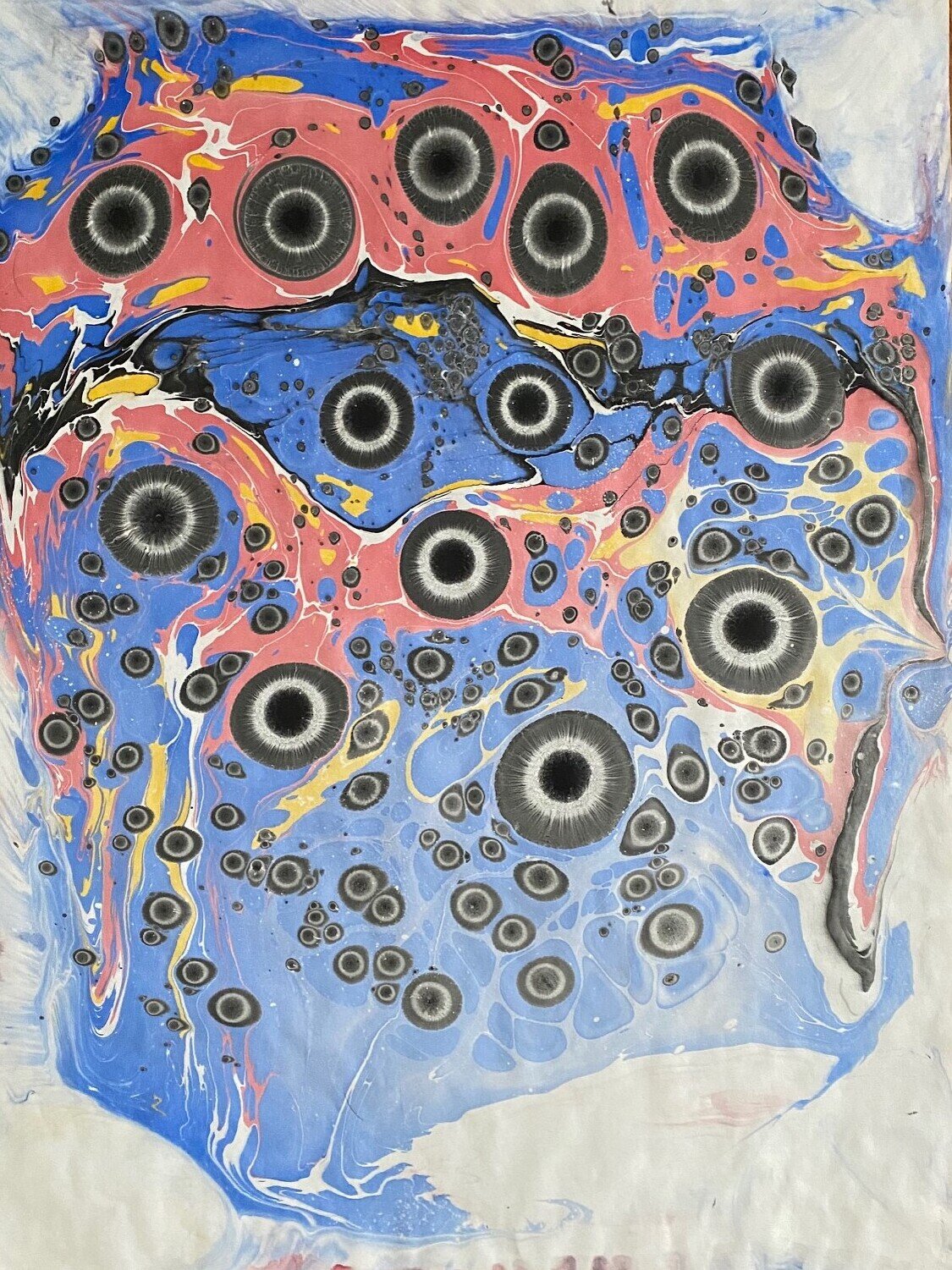

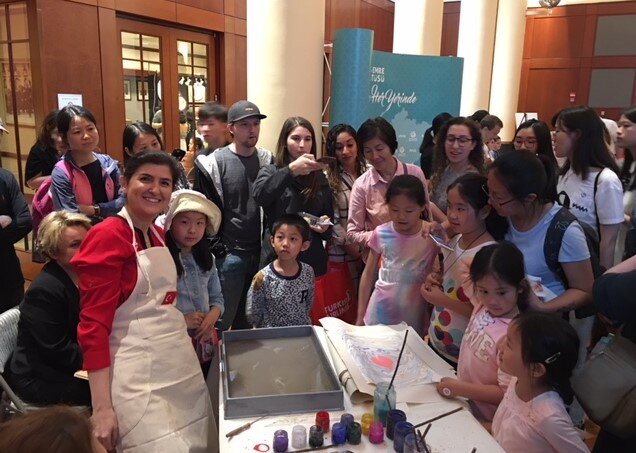

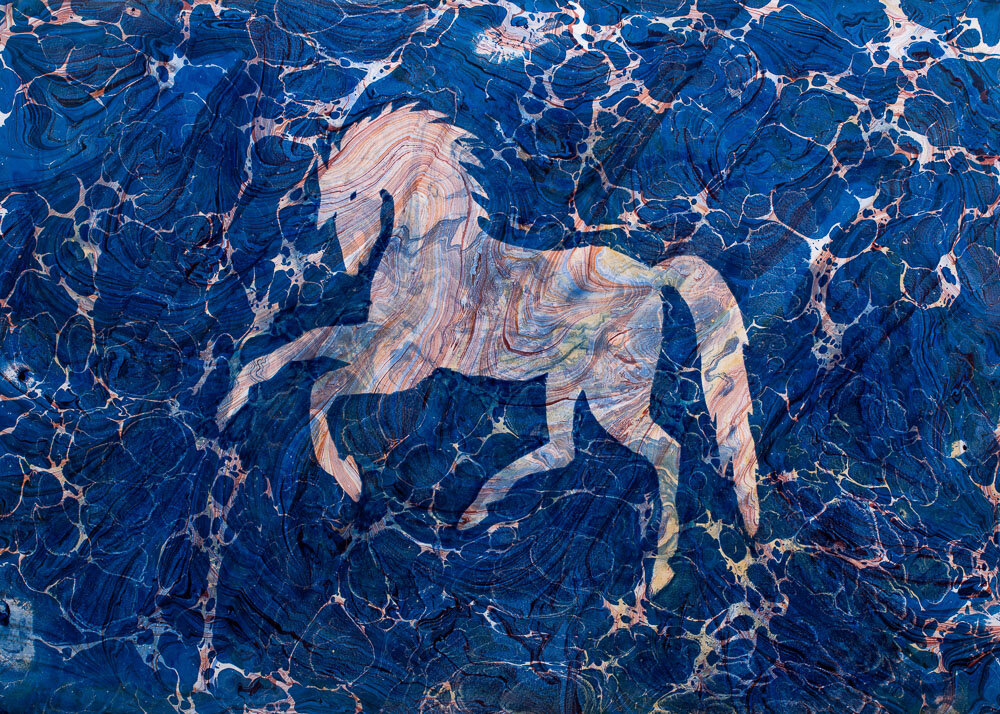
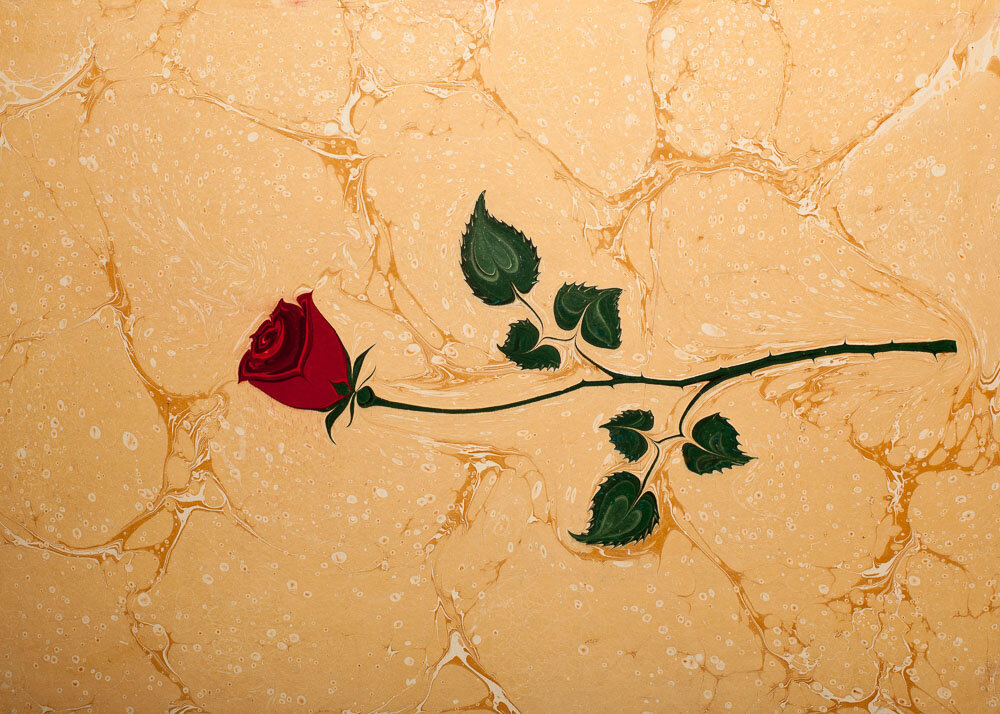
Reference:
http://www.turkishculture.org/traditional-arts/marbling-113.htm
https://mymodernmet.com/what-is-ebru-art-definition/







